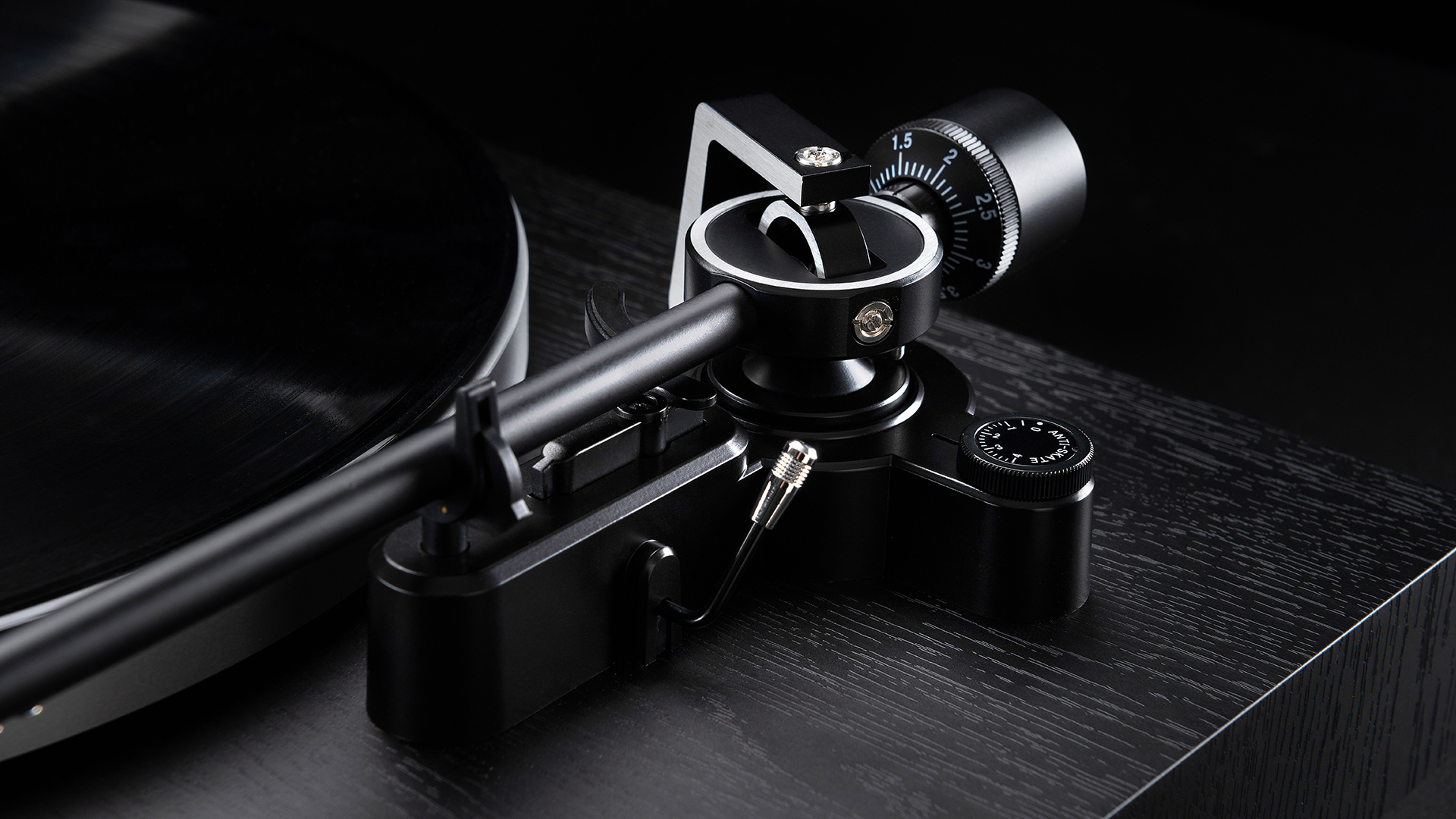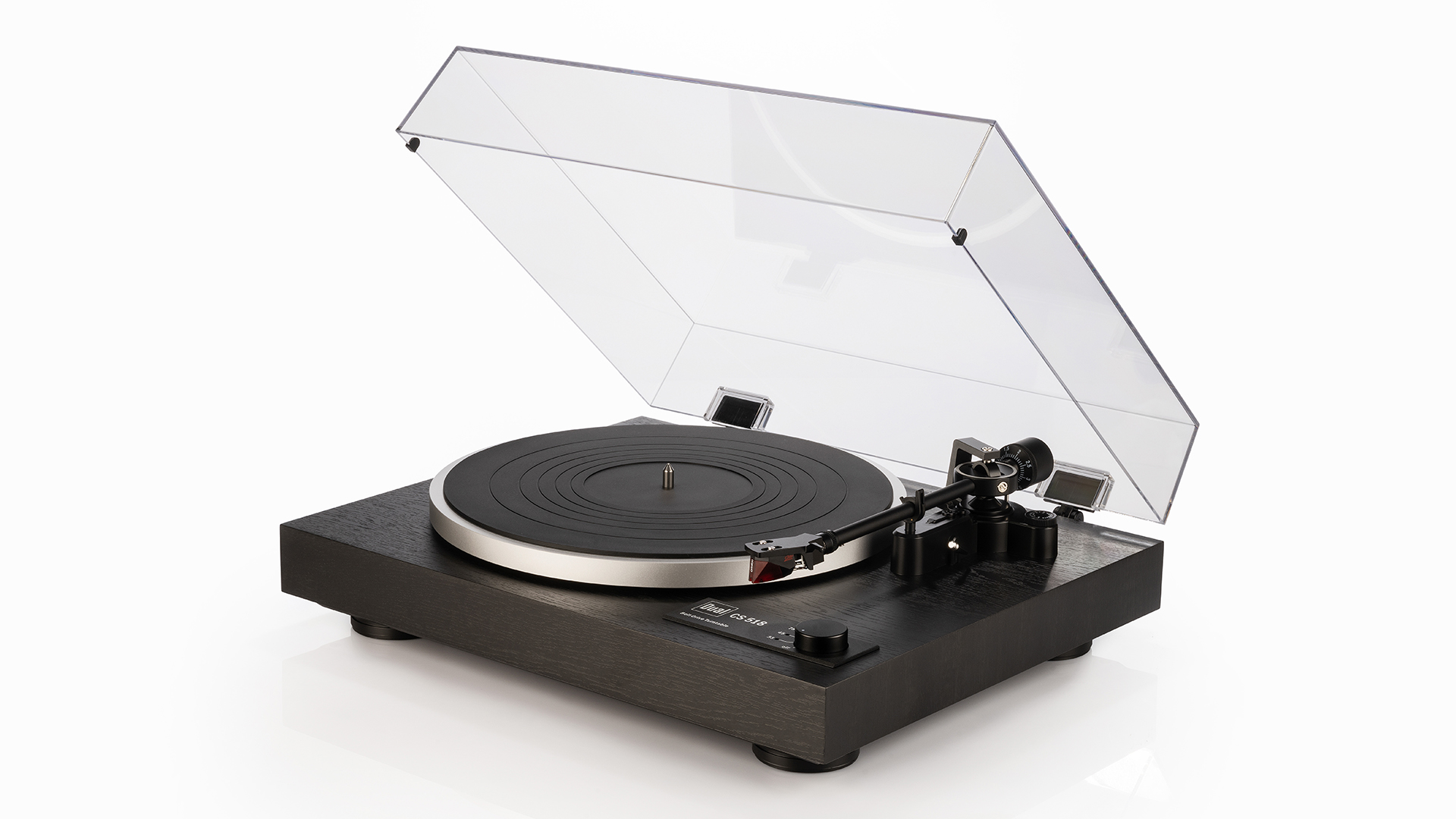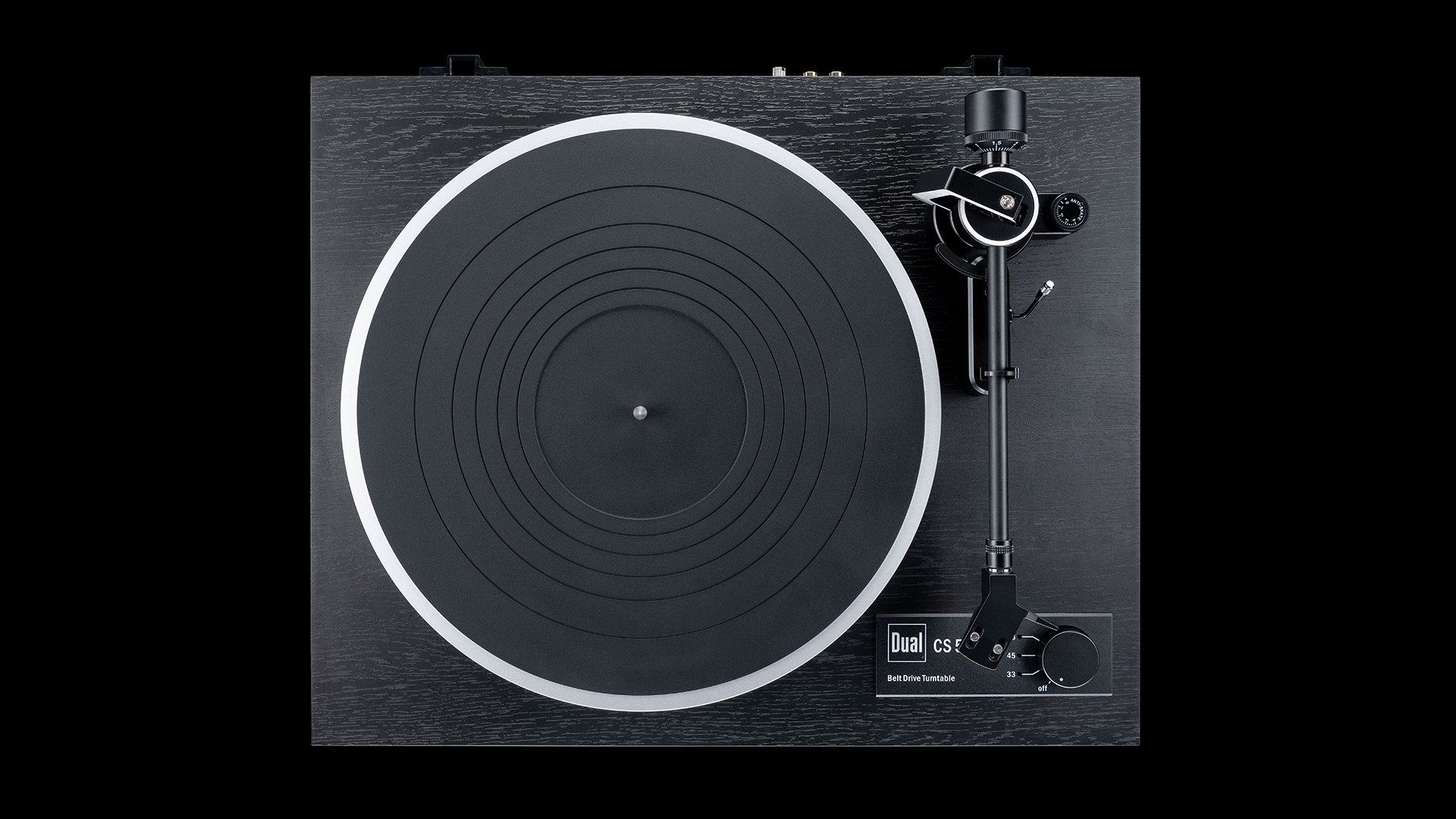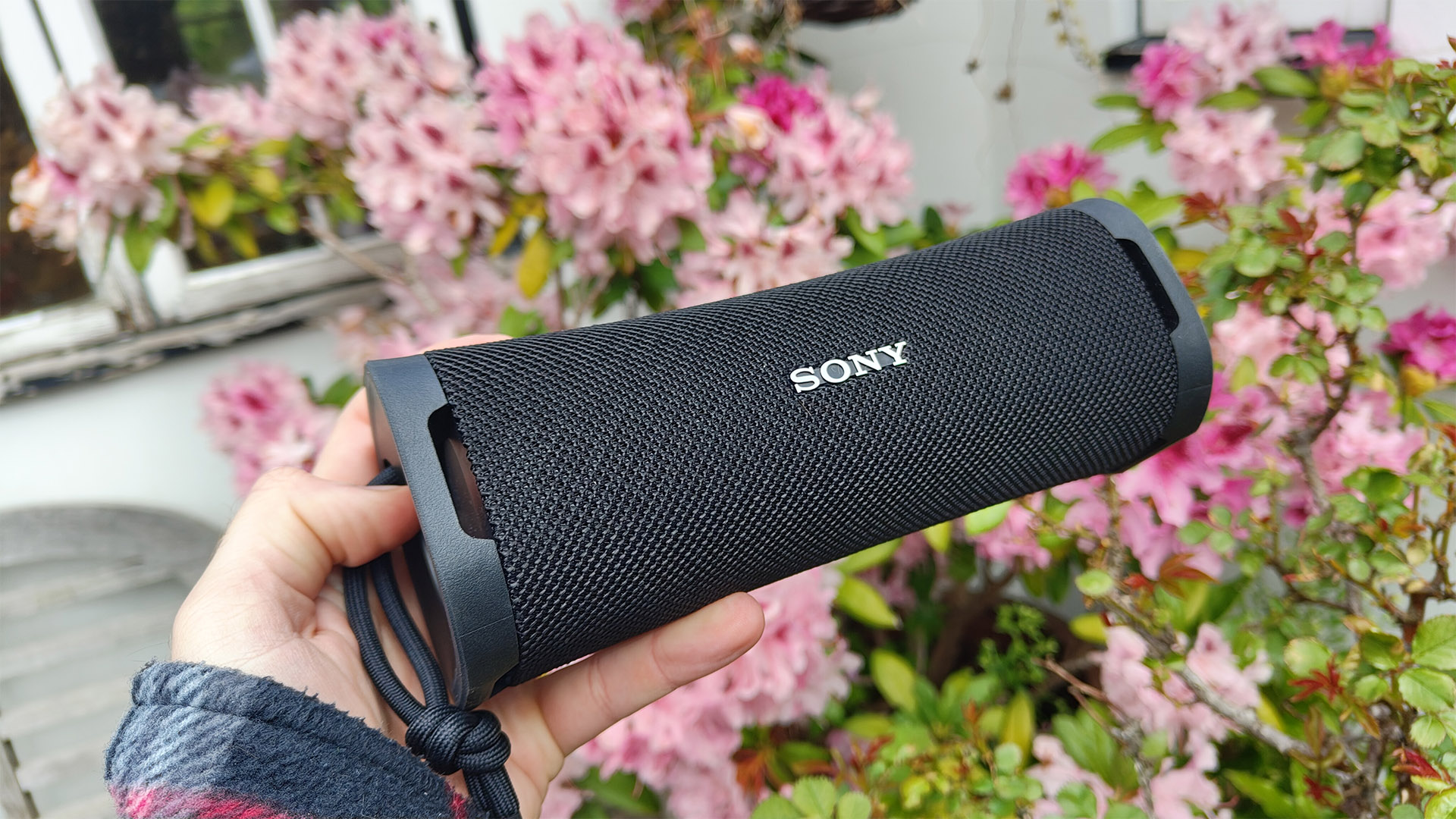What Hi-Fi? Verdict
Dual’s CS 518 is a fine alternative to the established class leaders
Pros
- +
Dynamic and expressive sound
- +
Good level of insight
- +
Easy to set up and use
Cons
- -
Up against some tough competition
- -
Built-in phono stage is a limited performer
Why you can trust What Hi-Fi?
It is tempting to start this review reminiscing about the Eighties when Dual dominated the budget turntable market, but we’re not going to do that. Instead, let’s go back a few months to our review of the company’s new affordable model, the CS 418. Given Dual’s lack of impact in the decades since its heyday this deck was something of a surprise, being a terrific performer for the money (£499 / $599 / AU$879).
Could the pricier, but closely related, Dual CS 518 build on these solid foundations, we wondered?
Build

Given a little extra budget, Dual’s engineers decided the best way of improving on its entry-level turntable was to change the arm to a more sophisticated twin gimbal bearing design. This new arm promises improved performance as well as greater compatibility with more ambitious cartridge designs than the pre-fitted Ortofon 2M Red. This well-regarded Ortofon moving magnet is a standard fit on the cheaper deck too. Tonearm apart, the CS 518 is much the same as its junior sibling and that’s no bad thing.
Its MDF plinth is a pretty solid affair and nicely finished in black vinyl. At this price level, this Dual comes up against rivals such as the new Pro-Ject Debut Pro (£699 / £999 / AU$1079) and Rega’s evergreen Planar 3/Elys2 combination (£799 / $1395 / AU$1499). It can’t quite match them for aesthetic appeal, but then again, the CS 518 includes a phono stage that can be switched in and out of circuit depending on your system and needs. This is potentially really useful, considering many price compatible amplifiers don't include such a circuit.
The tonearm certainly looks and feels better than the one used in the CS 418, though it still falls short of the well-engineered slickness of those found on the Pro-Ject or pricier Rega Planar 3. Practicality is a positive though, as it has a detachable headshell, which makes swapping cartridges simple.

Type Belt drive
Speed 33⅓, 45 and 78 RPM
Speed change Electronic
Tonearm Aluminium
Cartridge Ortofon 2M Red moving magnet
Phono stage Yes
Dimensions (hwd) 15 x 44 x 37cm (with dust cover)
Elsewhere we have a belt drive, a DC motor that’s decoupled to reduce any transfer of vibrations into the main structure and a choice of 33⅓, 45 and 78 RPM speeds at the twist of a dial. The aluminium platter is reasonably weighty and would ring quite strongly if it weren’t for the heavy rubber mat that sits on top of it.
This Dual is a simple deck to set up. The cartridge comes pre-installed so all that needs to be done is fitting the platter and tonearm counterweight, setting the arm bias, and then plugging the record player into your system with the supplied cables.
The latest hi-fi, home cinema and tech news, reviews, buying advice and deals, direct to your inbox.
In our experience, every turntable benefits from being put on a level, low resonance support that is as far away from the speakers as possible. This Dual is no different. Don’t stack it on top of other products; at best it just won’t perform well, at worst you’ll introduce hum into the equation.
We listen to the Dual in both our reference set-up of Cyrus Phono Signature/PSX-R2 phono stage, Burmester 088/911 Mk III amplifier and ATC SCM 50 speakers, as well as a more modest combination of Naim’s SuperNait 3 integrated with KEF’s LS50 Meta speakers, and it works well regardless. During the test we have Rega’s Planar 3/Elys 2 and Pro-Ject Debut Pro along for the comparison.
Sound

It’s clear that all three turntables are hugely capable for the money, but also that they have notably different characters. The Rega is the most dynamic and punchy performer, delivering more in the way of rhythmic drive than either of its rivals. The Pro-Ject counters with class leading precision and impressive low-end grip that tracks bass notes impressively. The Dual? Well, the CS 518 offers a big-boned presentation that’s bolder than the Pro-Ject manages, sounding more fluid and fun in the process. Does it dig up as much detail? No, not really, but when we listen to Beethoven’s Ninth Symphony in full flow we’re having too much fun to notice.
The Dual certainly paints in broader strokes than either alternative, but it still has expressive dynamics and can track nuances convincingly. We like the rich instrumental textures it renders and its ability to organise the mass of instrumentation into a cohesive musical whole.
Stereo imaging is pretty expansive but isn’t the most precisely layered we’ve heard at this level. It stays relatively stable when the music becomes complex, so that’s pleasing. There’s a good amount of low-end heft and that gives the Dual’s presentation a decent dose of scale and authority.
The full-bodied bass comes to the fore when we play Catch A Fire by Bob Marley & The Wailers. The low frequencies sound energetic and reasonably agile, though if this aspect were a priority, the likes of both the Pro-Ject and Rega do it even better. There’s a fine sense of rhythmic drive and the kind of midrange clarity that communicates the passion in Marley’s vocals well. Most importantly, this is an entertaining listen.

The CS 518 has a built-in phono stage, which neither of its rivals offer. This in itself could be enough to swing the buying vote in its favour, as even the most affordable good outboard phono stages tend to cost around £100 / $115 / AU$169. Unfortunately, this is where the Dual fails to take full advantage. The built-in phono stage is perfectly usable; it’s clear, fairly detailed and pretty low noise. However, it doesn’t sound particularly dynamic or rhythmic, and so dilutes our listening experience. That said, it’s perfectly fine to use over the short term, with a view to upgrading when funds allow. The rest of the deck is certainly good enough to justify that additional expense.
It is also worth upgrading the supplied interconnect. The one supplied will get you going, but swapping it out for something more capable (though still price appropriate) is well worth doing or you might never hear just how capable this turntable is.
Verdict

As is clear, this Dual has plenty of tough competition. But it’s well priced and sonically talented enough to be a viable alternative to the best at the price. It’s so pleasing to be able to say that about a Dual turntable again.
SCORES
- Sound 5
- Build 4
- Features 5
MORE:
Read our review of the Pro-Ject Debut Pro
Also consider the Rega Planar 3/Elys 2
Best record players: best turntables for every budget
What Hi-Fi?, founded in 1976, is the world's leading independent guide to buying and owning hi-fi and home entertainment products. Our comprehensive tests help you buy the very best for your money, with our advice sections giving you step-by-step information on how to get even more from your music and movies. Everything is tested by our dedicated team of in-house reviewers in our custom-built test rooms in London, Reading and Bath. Our coveted five-star rating and Awards are recognised all over the world as the ultimate seal of approval, so you can buy with absolute confidence.


